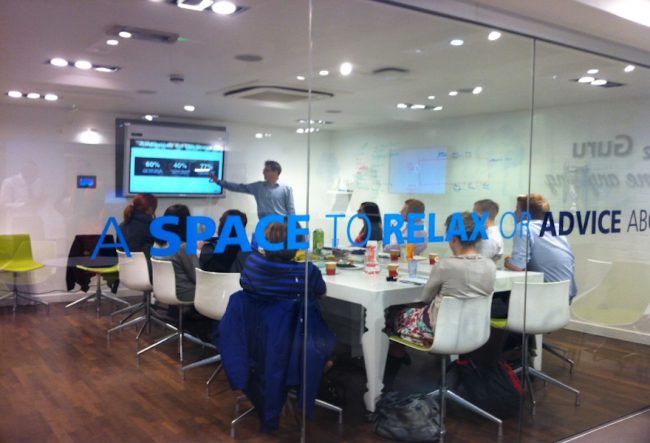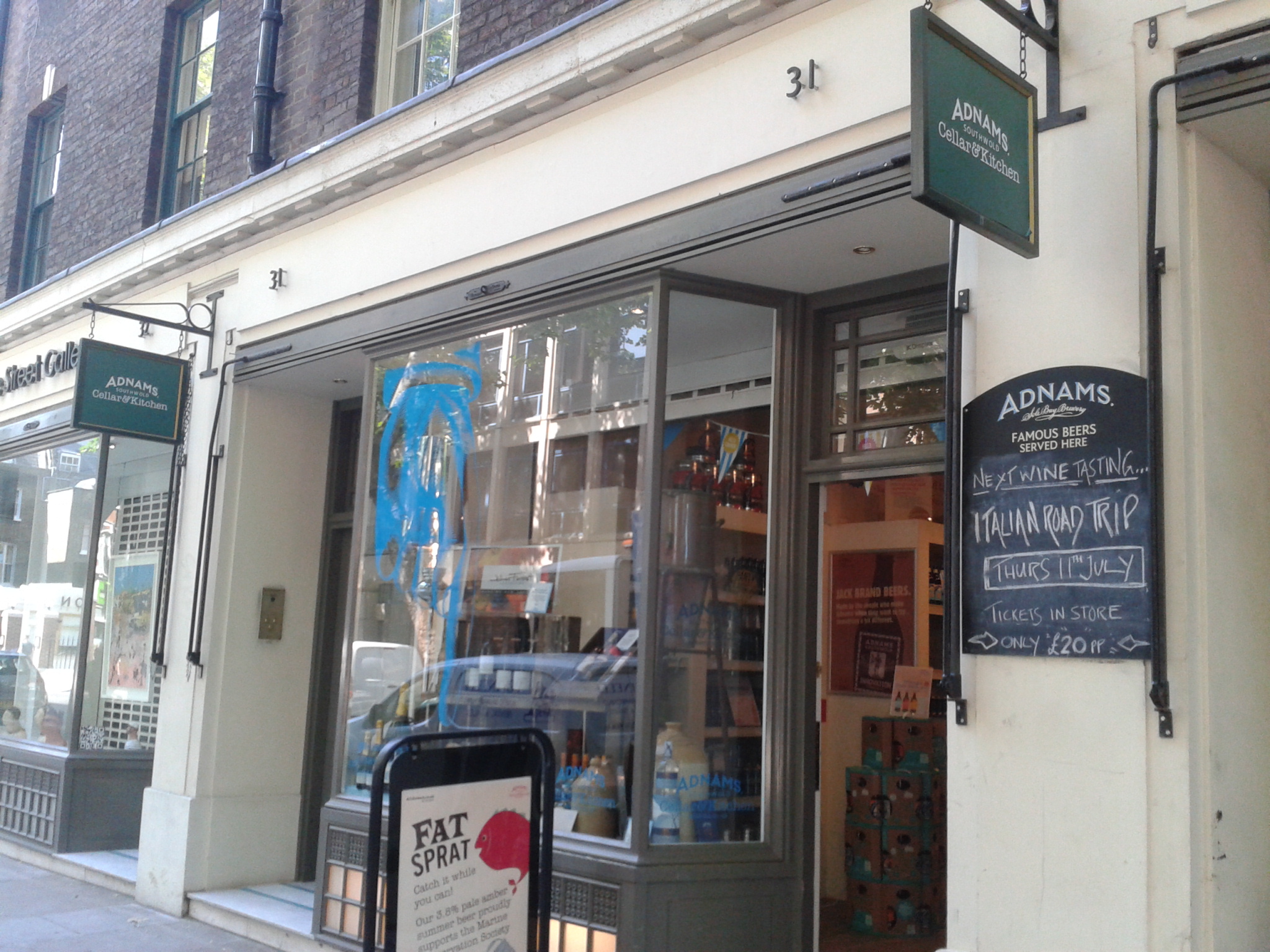
|

|
 Shortcut seminar by Green Banana Marketing on ‘Marketing essentials’ 16/05/2014
Shortcut seminar by Green Banana Marketing on ‘Marketing essentials’ 16/05/2014
Is it any easier to define what we mean by marketing for charities and NGOs? With squeezed budgets and complicated stakeholder needs, I sometimes wonder. If marketing for a charity is “to achieve organisational objectives and to bring the appropriate number of people from the agreed groups to engage and respond in a way that mutually satisfies both parties”, it’s surprising how few know their own organisational objectives, an obvious starting point for effective marketing. Fortunately, more know their own objectives and how these support the charity vision.
For today’s charities, innovation is important and effective, standout marketing. How to leverage digital touch points and to build long-term corporate partnerships with a solid shared strategic core, are also day-to-day worries.
Charity c omms departments change names at a dizzying speed; from Marcomms, Supporter Engagement to Marketing, Fundraising as standalone to a merged super unit around a common digital belief! 65 years on and James “marketing mix” Culliton will be turning in his grave. He described the combination of elements involved in making any marketing decision; more commonly called the 4 ps of marketing, which have stood the test of time, it’s worth revisiting some of our vast history of marketing and how we fit in! Product, Promotion, Place and Price. And later 3 more Ps were added; People, Physical evidence and Process.
omms departments change names at a dizzying speed; from Marcomms, Supporter Engagement to Marketing, Fundraising as standalone to a merged super unit around a common digital belief! 65 years on and James “marketing mix” Culliton will be turning in his grave. He described the combination of elements involved in making any marketing decision; more commonly called the 4 ps of marketing, which have stood the test of time, it’s worth revisiting some of our vast history of marketing and how we fit in! Product, Promotion, Place and Price. And later 3 more Ps were added; People, Physical evidence and Process.
Charities deliver a staggering amount for very little resource but sometimes lack focus. Multi-million pound corporate campaigns tend to work to a much tighter bandwidth, such as changing sales by 5% with a specific audience segment.
NGOs tend to know their brands better than their audiences. Segmenting audiences, by identifying the most receptive moments to engage with people and mapping out user journeys would be a critical part to improving supporters and the charities focus.
We’re delighted that four of the ten most effective UK charities cited in the recent ‘Passionate About Collaboration’ report, which identified the UK’s most effective NGOs, are our clients, based on responses from over 100 NGO Chief Executives. Our approach chimes with the report’s main conclusions, which is to be more effective with reach and impact.
We are lucky enough to have worked with some of the very best marketing teams in the charity world from Fairtrade to Buglife – this we believe comes from a love of their organisation and a belief in what they can do.

Using our expertise of the sector, we will deliver an audit of how your website and brand are delivering. The outputs from this work will be:
– a review of your brand / website delivery
– recommendations for some quick fixes
– more strategic feedback on how to build engagement with your audiences
Please do take up this offer – we look forward to working with you. Contact giles@greenbananamarketing.com


If I say Apple, Colgate, CNN, Coca-Cola, Canon, Volkswagen, people are immediately aware of what it is, where it is from and their degree of “attachment” to the brand or product. But the awareness around these brands has been nurtured, created, developed, and maintained by the companies’ brand strategists. Often with billions of pounds. Though we might not have the budgets in the charity sector, some of the learnings are useful and applied consistently, can be very effective.
Last century, the aim was to build and to develop a strong brand with the public through advertising. Nowadays, with the Internet and ever-tough competition all over the place, organisations need to build their brand’s reputation on and offline, and be as creative as ever to generate maximum interaction.
How do you develop an on and offline strategy that works? Should we talk about the word ‘brand’ for charities, which has only just stopped being a ‘dirty word’? How do we build strong engagement around your brand?
Here are a few examples of brands that have successfully managed both their on and offline strategy over the last few years. No doubt there will be a few surprises with our selection.
 The story of Adnams, a small beer producer that is building its brand around communities:
The story of Adnams, a small beer producer that is building its brand around communities:
Established in 1872, Adnams, as a “basic” retailer and pub owner, started to build life around its brands by relating its products to its mission and vision.
Adnams created a community around each of its brand. In 1990, it first built the Adnams’ charity to help people living within 25 miles from Southworld. Then it created a history around each branded beer.
And finally, they are helping protect the environment and sealife by supporting the Marine Conservation Society with the launch of the Fat Sprat beer and by using “green” distillery production. For example, they work with local farmers and producers; they use aneoribic digestion units, green roofs and bore holes to chill their brewery and the first carbon neutral bottled beer was made from hops grown locally at East Green.
The company maintains interest with its audience of the histories and builds real engagement and experience through brewery visits, events for the community and regular tweets. In 20 years they have built a strong offline reputation. Recently, they have started to develop this online reputation by refreshing their retail website, finely tuned to its audience needs, inviting them to participate in events, to comment, to interact on social channels and to built the story of their brand together.

Adnams expanded their activity, opening their Adnams Cellar & Kitchen shops to attract a new segment of women. “We were keen to appeal to the 50 per cent of the population we weren’t talking to – females.” says Andy Wood, Adnams chief executive and, in 2012, they won the Queen’s Award for Enterprise: Sustainable Development.
To what end – increased sales, visits, awareness? We’ll look at this when we meet.
 Buglife building its brand to be the “one-stop-shop” for bugs
Buglife building its brand to be the “one-stop-shop” for bugs
Created in the 90’s when there was no one organisation devoted to protecting invertebrates, Buglife became the first to do so in Europe.
Over the past 20 years, 1,000 active members have joined Buglife. In 2012, a strategy and business review, helped by the Tubney Foundation funding, identified opportunities to increase their membership to 10,000 in the next five years by growing awareness through the brand and establishing new partnerships.

Buglife worked on all aspects (a more contemporary logo , website, social channels, employee engagement etc.) of their brand “personality”, to create a stronger and more powerful “environmental charity”. Green Banana Marketing has been assisting Buglife in defining their priorities, brand image, audiences and digital assets including ‘developing a new’ website.
For their various audiences, offline, Buglife organise different events (including be-lines), children packs for schools to awareness of invertebrate causes through their campaigns like Neonics. Online GBM have worked hard to build an entirely new website, keeping their audience up-to-date and involved. The aim being to increase participation with main groups (media, public, policy makers and partners) and to help them understand and interact with the main issues, and supporting the ambition of being the “one stop shop” for Bugs.
These recent change gave Buglife the opportunity to review its mission and image, and to create even more real interaction with its audiences.
The online part of this project will be launched towards the end of July – so we will be able to give a progress report at our next shortcut on 26th of July.
For more information, or to book your place – View event invite now!

Giles Robertson, Managing Director of Green Banana Marketing and associate Sustainability Practitioner, Kim Bailey, took part in a Google Hangout Session on whether consumers have turned-off from green and how marketing can switch them back on.
Check out the video on our You Tube Channel:
Here are the top 10 tips for marketing sustainability that came out of that conversation:
Although the good old marketing strategies of knowing your customer and meeting them where they are in their environmental knowledge still holds good; sustainability marketing requires tangible proof for any claims. Promises need to be delivered.
Green Banana Marketing Ltd’s associate sustainability practitioner, Kim Bailey, works with companies and charities to ensure that they are as green, smart and fair as they claim to be.
Follow us on Twitter @gogreenbanana.


“If you make customers unhappy in the physical world, they might each tell six friends. If you make customers unhappy on the internet, they can each tell 6,000 friends”
Jeff Bezos, CEO at Amazon
Social media began almost a decade ago but it’s become a far more prominent and important part of most people’s lives than we could have predicted. It has become a more advanced version of the classic word-of-mouth – and companies try to use it as such.
Here are five tips to help increase your influence through social media platforms.
1. Know your online presence
Nowadays, almost all groups, charities, companies and individuals are running a social platform (or they should be). However, to make the most of your online presence, you need to be able to answer three fundamental questions:
2. Understand the best way to influence key audiences
Once you have found what is the best platform to reach your target audience, you need to find the best way to influence them through this channel. Should we produce posts, videos, photos and engage our target audience with games, petitions, actions, competitions etc? Keep them informed of how many actions and time spent equates to a certain level of influence. Amnesty do this really well, explaining that in 5 minutes you could sign a petition, with half a day’s support, you could attend a rally.
3. Produce shareable content – and make it easy to do so!
Most social platforms allow for the sharing of content so it is easy to engage with campaign videos, infographics, viral, posters, etc. in this most popular way. As stand out is tough on social platforms, all your creative talents should be focused on producing relevant photos to promote your posts and increase sharing opportunities. Make sure your content is not too heavy and long, and that people can quickly understand and share with their comments (and ownership). Heck, why not write a shareable chunk of text to go with posts, 140 word re-tweet friendly.
4. Consistent and flowing campaigns – don’t start and stop.
When you start being present on a social, make sure you keep your audience engaged by regularly posting information (at least twice a week). Show off past projects and successes, the difference you’ve made so far, your ‘storyboard’ or your personality – by interacting in this way, you will build engaged audiences. Keep you audience up to date. But don’t bore them.
5. Finally, let others do the heavy lifting!
Relevant partners will happily use your content, so build your campaign and change strategy with this in mind. You may well be the trusted partner in this programme and you can make use of networks, which may well quickly get to 1.5million people – if you are working with O2 Priority Moments, for instance. This is well worth doing if it can build support and engagement in a meaningful and relevant way.
Some of the best charities and environment social campaign from the last year include:
Campaign “Touch Yourself” for Breast Cancer Awareness

The campaign launched in October 2012 by F Cancer and Women’s Health and Men’s Health magazines, aimed to promote early cancer detection through self-checks for breast lumps. A Facebook app was created to pledge to perform a self-check and share a variety of 14 pre-written postcards with friends, encouraging them to do the same.
This is the king of campaigns, a perfect example of how to use of social channels. Facebook was the main channel, with sharable content engaging the target audience and ways to encourage friends to do the same.
Campaign Twestival for Charity: Water

“On 12 February 2009, 200+ international cities hosted a Twestival (Twitter + festival) to bring Twitter communities together to raise money for Charity: Water”. One week later the charity water staff flew to Ethiopia to drill the first well.
They immediately posted videos on Twitter related to their work, with some “re-tweetable“ information about water conditions, and published funds raised for each city. The Twitter activity allowed communities to engage, raise £174,899 funds for water projects, to build 55 wells, to serve water to over 17,000 people, and also to allow followers to see the day to day activity.
